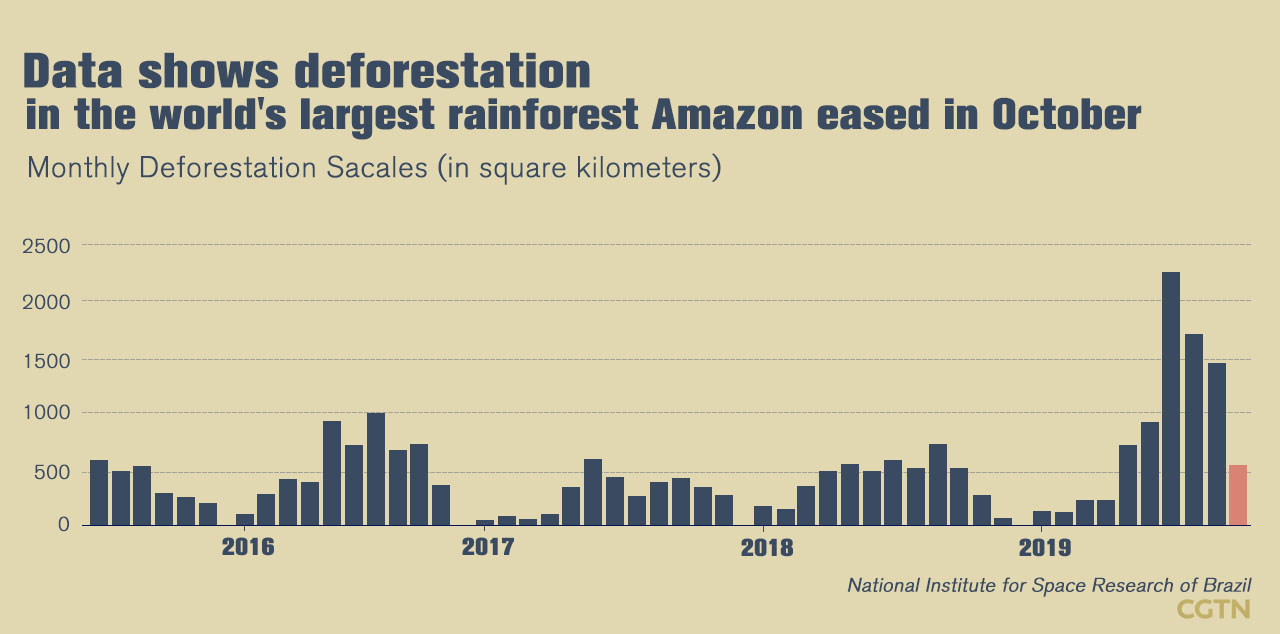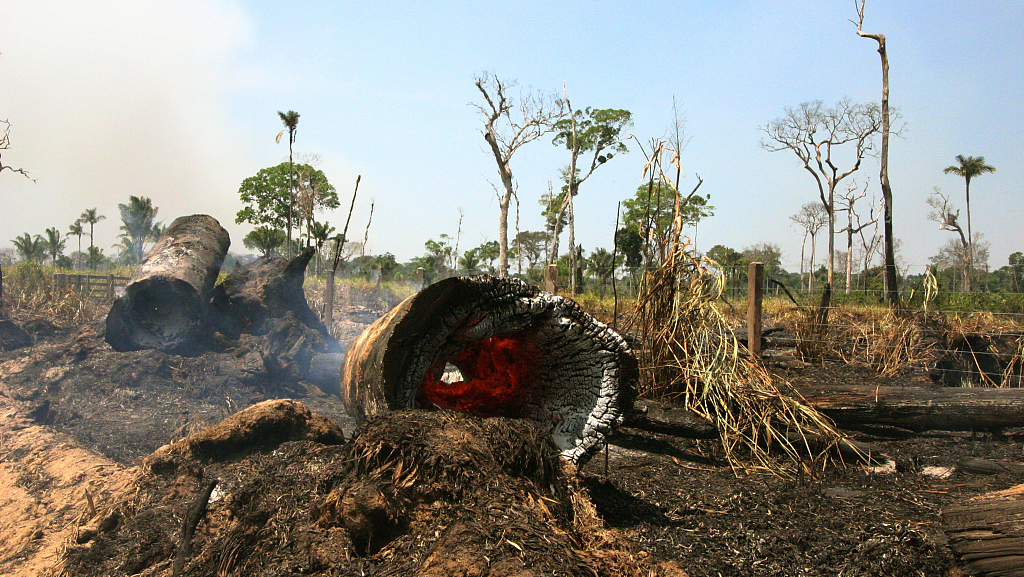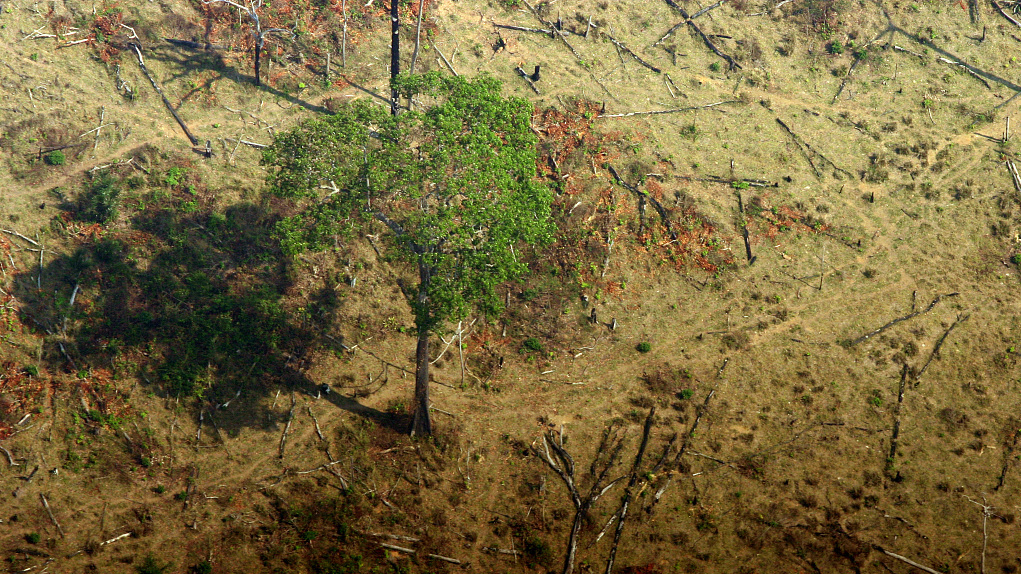The pace of surging deforestation in Brazil's Amazon rainforest this year eased in October, government data showed on Friday, with the onset of the rainy season making the muddy forest tougher to penetrate and helping prevent fires.

Amazon deforestation data. /CGTN Graphics
Amazon deforestation data. /CGTN Graphics
Compared to October last year, deforestation for the month was up five percent, according to preliminary data from Brazil's space research agency INPE.
This was a minor increase compared to the 83 percent rise for January to October over the same period last year. For the first 10 months, deforestation totaled 8,408 square kilometers (3,246 square miles), an area more than 10 times the size of New York City.
"We've had several good rains," said Philip Fearnside, an ecologist at the National Institute of Amazonian Research in Manaus, the largest city in Brazil's Amazon.
He emphasized that a five percent increase in October still represents a worsening from last year.
The Amazon is the world's largest tropical rainforest, absorbing vast amounts of greenhouse gases that contribute to climate change.
Fires swept through the Amazon in August, with the number of hotspots on a year to date basis surging to the highest point since 2010, drawing global outcry from world leaders and the public.

Forest fire in Amazon, Brazil. /VCG Photo
Forest fire in Amazon, Brazil. /VCG Photo
Environmentalists and scientists have blamed the destruction on President Jair Bolsonaro - for emboldening deforesters with strong rhetoric in favor of developing the Amazon and also for reining in the country's environmental enforcement agency.
"There is no other explanation other than the government's constant discourse plus the actual concrete actions in weakening environment," Fearnside said.
Bolsonaro's office declined to comment, while Brazil's Environment Ministry did not immediately respond.
The fires fell substantially year-on-year in September and October, after Bolsonaro temporarily banned setting fires in the region and sent in the military to battle the blazes. Year-to-date, the number of fires recorded in the Amazon has dropped back to only the highest since 2017.
But fires continue to rage in neighboring biomes like the Pantanal wetlands, an area renowned for its unique wildlife that draws tourists in search of jaguars and rare birds. Roughly 12 percent of the Pantanal has gone up in flames from January to October, the most since 2007, according to INPE.

A jaguar in the Pantanal wetlands, Brazil. /VCG Photo
A jaguar in the Pantanal wetlands, Brazil. /VCG Photo
Scientists worry that the Amazon may be being pushed toward a point of no return, after which it will dry out and degrade into a savannah.
Research from U.S. space agency NASA released this week showed the atmosphere above the Amazon has dried out over the past 20 years because of human activity including fires, deforestation, farming and ranching.
"The trees need to transpire to cool themselves and to add more water vapor into the atmosphere. But the soil doesn't have extra water for the trees to pull in," said Sassan Saatchi, a co-author of the study, in a written statement.
"If this continues, the forest may no longer be able to sustain itself."

Deforestation in the Brazilian Amazon has surged to record levels. /VCG Photo
Deforestation in the Brazilian Amazon has surged to record levels. /VCG Photo
(If you want to contribute and have specific expertise, please contact us at nature@cgtn.com.)
Source(s): Reuters